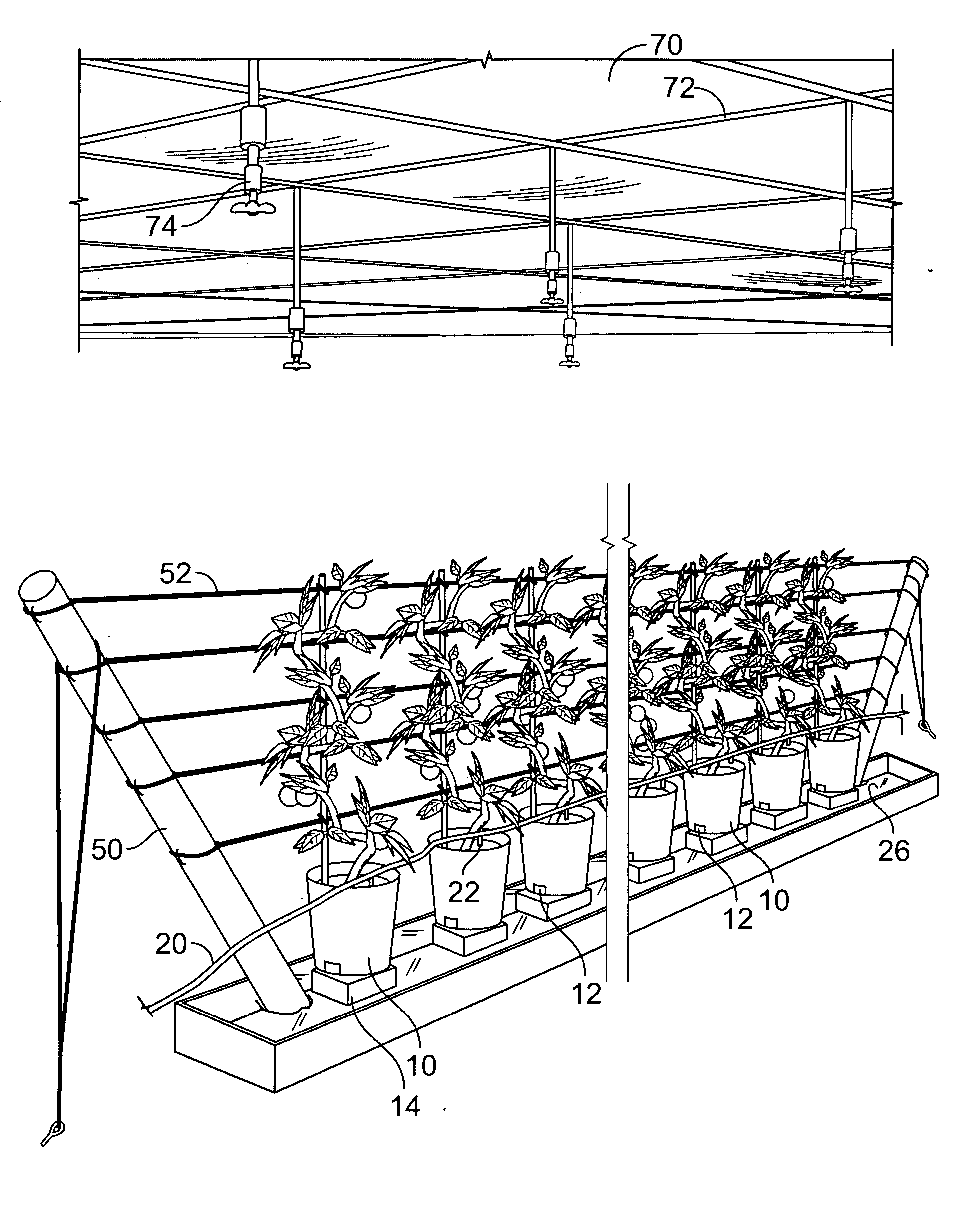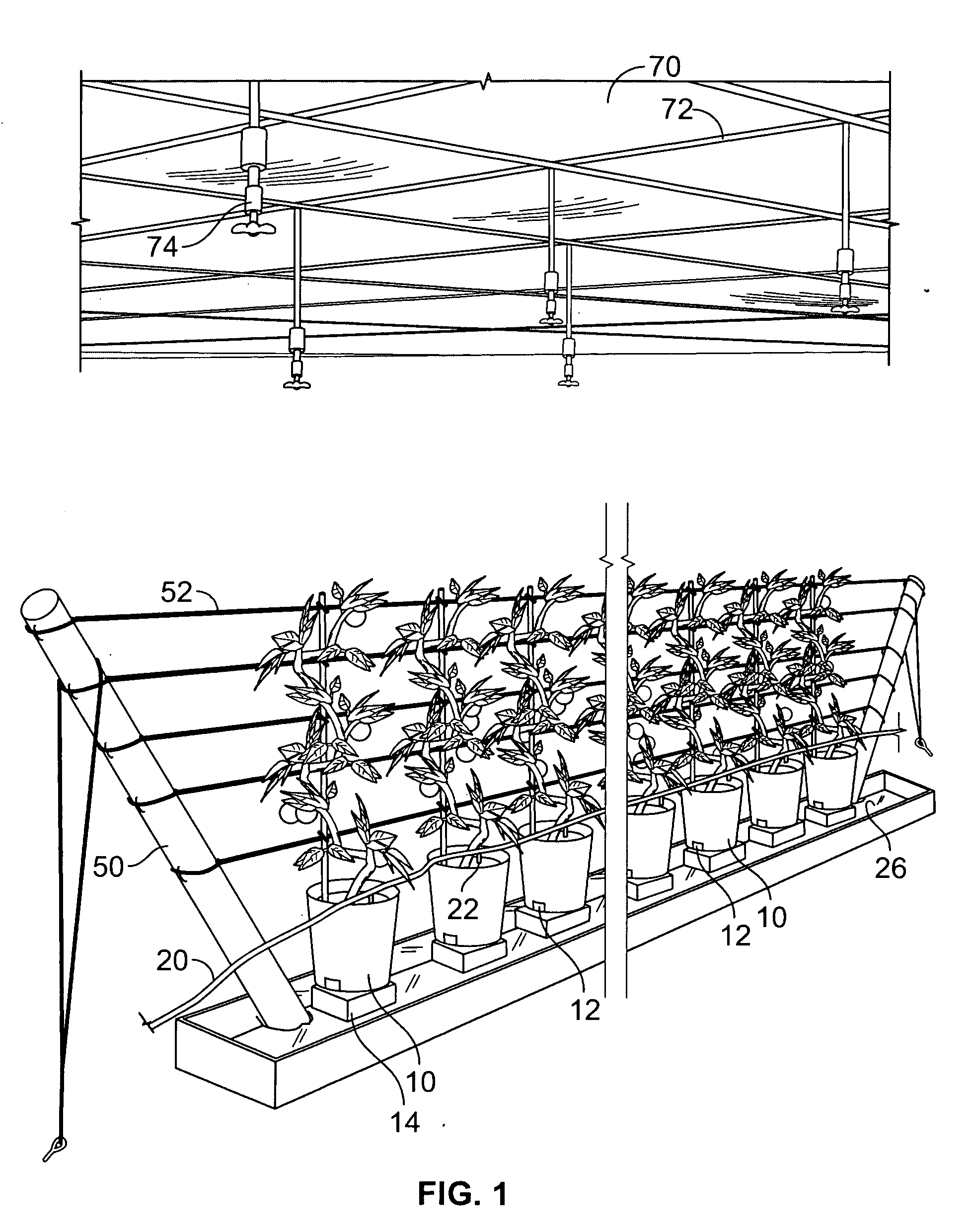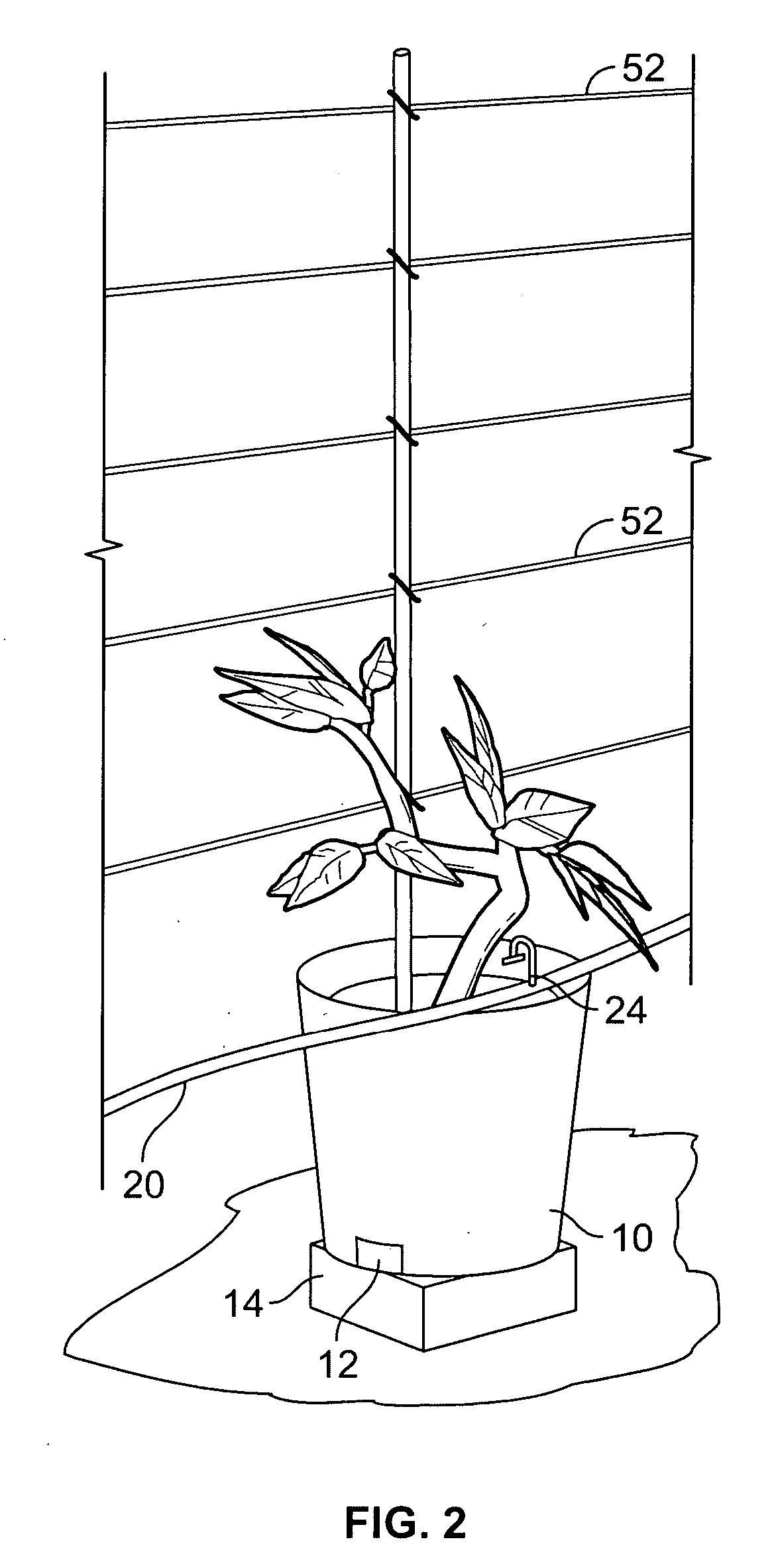Method of hydroponic cultivation and components for use therewith
a technology of hydroponic cultivation and components, applied in botany apparatus and processes, agriculture, gas emission reduction, etc., can solve the problems of stress on plants, difficult to achieve the effect of reducing space, time to harvest, and reducing the use of fertilizers
- Summary
- Abstract
- Description
- Claims
- Application Information
AI Technical Summary
Benefits of technology
Problems solved by technology
Method used
Image
Examples
Embodiment Construction
[0016] As shown in the drawing figures, a component of the present invention is a planting container 10 that provides a confined space for the roots of the plant to develop. The planting medium may be any that is commonly known such as a mixture of 80% Peat Moss and 20% Pearlite potting soil. Openings 12 in the planting container 10 allow for drainage of excess moisture within the containers.
[0017] The planting containers 10 may also be isolated from direct contact with the underlying soil. This may be accomplished in several ways such as placing the containers 10 on a floor constructed over the underlying soil, placing a piece of plastic or other isolating layer between the soil and the container, or elevating the containers. The preferred method that is shown in the drawing figures is to elevate the containers 10 on stands 14. This not only isolates the containers 10 from the soil, but also promotes better drainage.
[0018] By isolating the containers 10 from direct contact with t...
PUM
 Login to View More
Login to View More Abstract
Description
Claims
Application Information
 Login to View More
Login to View More - R&D
- Intellectual Property
- Life Sciences
- Materials
- Tech Scout
- Unparalleled Data Quality
- Higher Quality Content
- 60% Fewer Hallucinations
Browse by: Latest US Patents, China's latest patents, Technical Efficacy Thesaurus, Application Domain, Technology Topic, Popular Technical Reports.
© 2025 PatSnap. All rights reserved.Legal|Privacy policy|Modern Slavery Act Transparency Statement|Sitemap|About US| Contact US: help@patsnap.com



